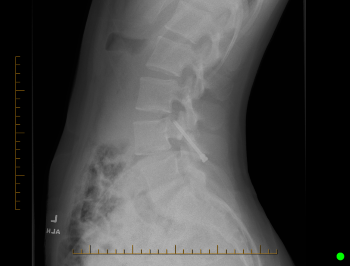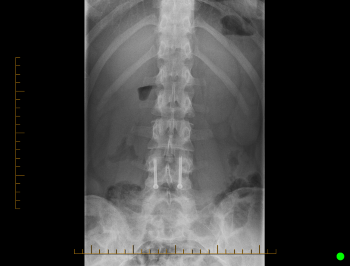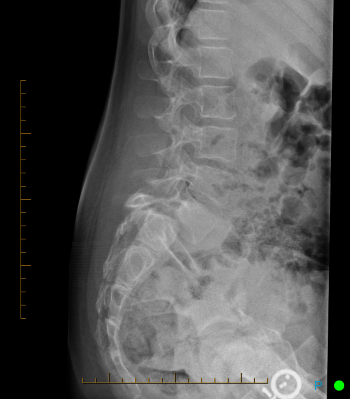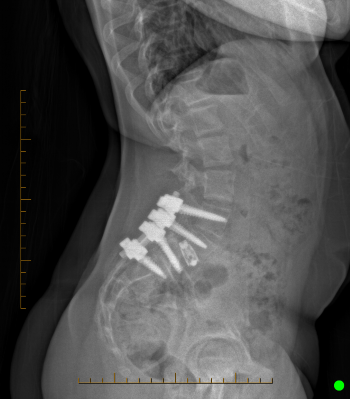Spondylolysis and Spondylolisthesis
Spondylolysis
Spondylolysis is a defect in the pars interarticularis (pars), a part of the posterior aspect of a vertebra. It is often referred to as a “stress fracture.” It is quite common and can be a result of overuse injury or genetic predisposition. In some cases, especially in teenage athletes, it leads to low back pain. This is initially treated non-surgically with activity modification, physical therapy, bracing and/or pars injections through our Interventional Radiology department.
If these treatments are not effective in alleviating symptoms, some patients are candidates for minimally invasive pars repair. The procedure entails placing a screw through the defect with image guidance to provide stability and enable healing. Recovery from such a procedure usually requires staying home for school for 1 to 2 weeks and out of exercise and sports for 2 to 3 months. The goal of surgery is to improve symptoms while maintaining flexibility and enabling a rapid return to activities.


Spondylolisthesis
In some patients, spondylolysis or other defects can lead to spondylolisthesis, where one vertebra slips forward on the one below it, potentially leading to low back pain and neurologic symptoms. Treatment again often starts with rest, physical therapy, and possible bracing. However, surgical treatment for spondylolisthesis requires spinal fusion where rods and screws stabilize the spine, and bone graft is used to help the bones to heal or fuse together. The goal of surgery is to restore spinal balance and improve symptoms with long-term relief.
Surgery for spondylolisthesis requires a longer recovery time with 1 to 2 days in the hospital and 3 to 6 weeks out of school. Once discharged home, your child should be able to walk stairs and sleep in their own bed. They will also be discharged with a short course of pain medication to help with discomfort.


- Spine Care
- Bracing Options for Scoliosis
- Growing Rods
- Halo Gravity Traction
- iSpine Clinic
- Mehta Casting
- Microdiscectomy for Disc Herniation
- Outreach Services
- Spinal Fusion
- Spine Care Consultations
- Spine Surgery: What to Expect
- Spondylolysis and Spondylolisthesis
- Vertebral Body Tethering
- Meet the Team
- Orthopedics
